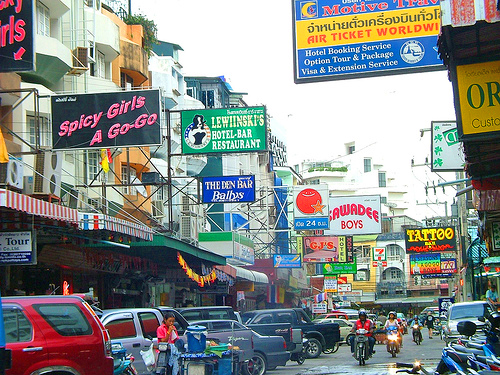
Thailand, a country often deemed the “Land of Smiles”, has become a travelers’ hotspot, renowned for its sex tourism industry. The industry is essentially run on the sex trade of extremely poor women and children, many of whom are trafficked into Thailand from Burma. Due to the country’s general poverty, the revenue that sex tourism brings in, and the corruption of the police enforcement in Thailand, the practice continues as a prime contributor to international human trafficking. Ironically, discussion of sexuality is frowned upon in these more conservative Asian countries, so a blind eye is turned on sex trade industry making it difficult to reform.
Bangkok, Thailand’s capital city has specifically become notorious for both its Red Light District and its array of perverse entertainment. Performances called “Ping-Pong Shows” showcase young women, forced into the business by trafficking, poverty, or a combination of the two. The women appear in a variety of forms of sexual torture, inserting and ejecting everything from small turtles to razor blades to ping pong balls into their vaginas throughout their act. Sexually transmitted diseases, particularly AIDS/HIV, have become prevalent due to Thailand’s boom in sex tourism, however the Thai government is hesitant to address the problem out of fear of the loss of tourists’ business.
As of 2009, it is estimated that more than 10% of the country’s tourist spending goes towards the sex trade, driven largely by Westerners’ dollars. Of those in the sex trade in Thailand, more than 30% are between the ages of 12 and 17.
Click to view more images of Sex Trade in Thailand Slideshow
Sources:
Blog: Untold Stories Pulitzer Center on Crisis Reporting
